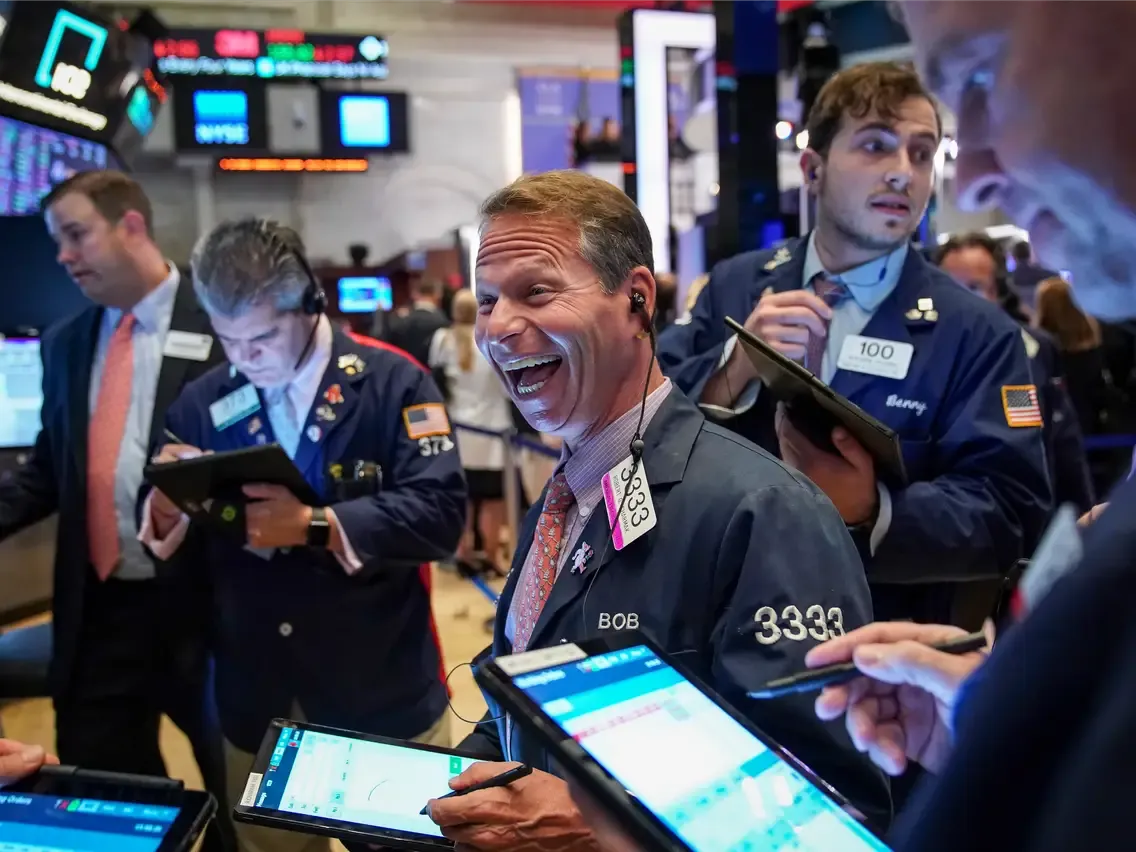There is a tendency for March to be a positive month for the stock market, but this year, it could see more of the same turbulence that rattled investors in February this year.
With the S&P 500 down 2.3% for the month through Monday, it is expected that stocks are set to close February with steep losses. For the year so far, the index has grown by 3.7% compared to the same period last year.
“February posted an average decline of 0.21%, which is the second worst decline of the year after September,” said Sam Stovall, chief investment strategist at CFRA, who said it was the second worst month of the year.
In general, March is the best month of the year for stocks. According to CFRA data going back to 1945, March is the fifth-best month for the S&P 500 in terms of gains.
As the Federal Reserve prepares for its interest rate decision on March 22, stocks are bound to be choppy in a month dominated by the Federal Reserve's interest rate decision, particularly if Treasury yields continue to rise. The sharp rise in yields in late February contributed to a decline in stocks in recent weeks, especially last week, when the S&P 500 fell 2.7% - its worst weekly performance since 2023 due to rising yields.
The yield on the 10-year Treasury note edged back up to 4% last week after falling to a low of 3.3% at the beginning of February. There is an opposite correlation between yields and prices.
As Stovall said, "I think that the Fed is driving the market, and I believe that the March FOMC meeting will be important because, with every piece of economic data that comes out, the probability of a 50-basis-point rate hike seems to increase.". Half a percentage point is equal to fifty basis points.
The market had been expecting a quarter-point increase in the benchmark fed funds rate, but hotter-than-expected inflation data and strong data on jobs and retail sales have increased the odds of a bigger rate hike in the near future. Following a rise of just 0.1% in December, the consumer price index rose 0.5% in January. "March is a pivotal month for the Federal Reserve. "There is no doubt that the Fed is driving the bus," Stovall said.
Investors are on the lookout for economic data in March that could set the tone of whether or not the Fed has made progress in slowing down the economy and inflation.
‘Rockier’ than thought
“There is a possibility that it will be more difficult than people think,” said Richard Bernstein, the CEO of Richard Bernstein Advisors. Among the potential catalysts for stocks in March, according to Bernstein, will likely be the Fed policy meeting and the series of data releases ahead of the meeting.
"It's like fighting the Fed in the modern day," he explained. “As it used to be, 'don't fight the Fed' meant that you were too bearish, as the Fed was trying to stimulate the economy as much as it could. Currently, everyone seems to be too bullish, and the Fed is trying to calm things down.”
The release of the February employment report, which is expected to be released on March 10, as well as the consumer price index, which is expected to be released on March 14, will be especially important as investors assess to what extent the Fed can raise interest rates. Regardless of whether the consumer price index comes in lighter or hotter than anticipated, the market is likely to react accordingly.
Bernstein said, "Tech is going to outperform like a madman, with a cooler number. In the event that it comes in [higher than expected], it will underperform like a madman.”
Investors are still adjusting to the idea that the Fed may raise rates more than they expect and hold them higher for longer periods.
“From our perspective, I think the Fed will have a harder time-fighting inflation than people think,” he said. Higher interest rates have the greatest impact on tech and growth stocks. Prices typically reflect higher expectations of future earnings, and as rates rise, earnings become less valuable.
More risk
“I think you're taking on a lot more risk than you think in that situation with a high p/e growth portfolio,” Bernstein said.
As far as Stovall is concerned, historically, real estate investment trusts, consumer discretionary, utilities, and materials have been the sectors that perform better in March. Healthcare, information technology, and consumer staples were among the worst performers in February, while technology, industrials, and consumer staples were among the best performers in February, while energy, real estate, and communications services were among the worst.
There is a consensus among many strategists that the market will be weaker in the first half of the year, but will rebound in the second half. In contrast, Bernstein warns that some of the negative issues for stocks have not yet been priced in yet, which is one of the biggest concerns for investors.
"Investors will have to adjust to weaker earnings in the second half of the year," Bernstein said. “People are concentrating almost exclusively on the Fed...and aren't thinking about earnings."
There might be a silver lining to weaker earnings, according to Bernstein, such as companies becoming more cost-conscious and cutting back on hiring as a result of weaker earnings. In that case, some pressure would be relieved on the job market, which continues to be strong despite the recession.

Subscribe to our newsletter!
As a leading independent research provider, TradeAlgo keeps you connected from anywhere.








